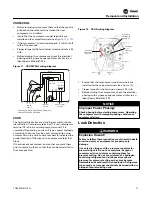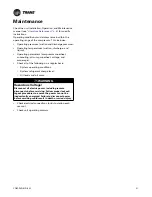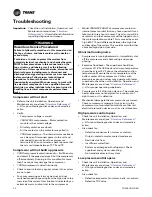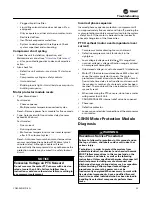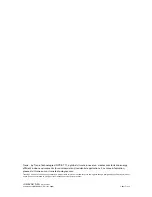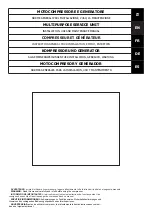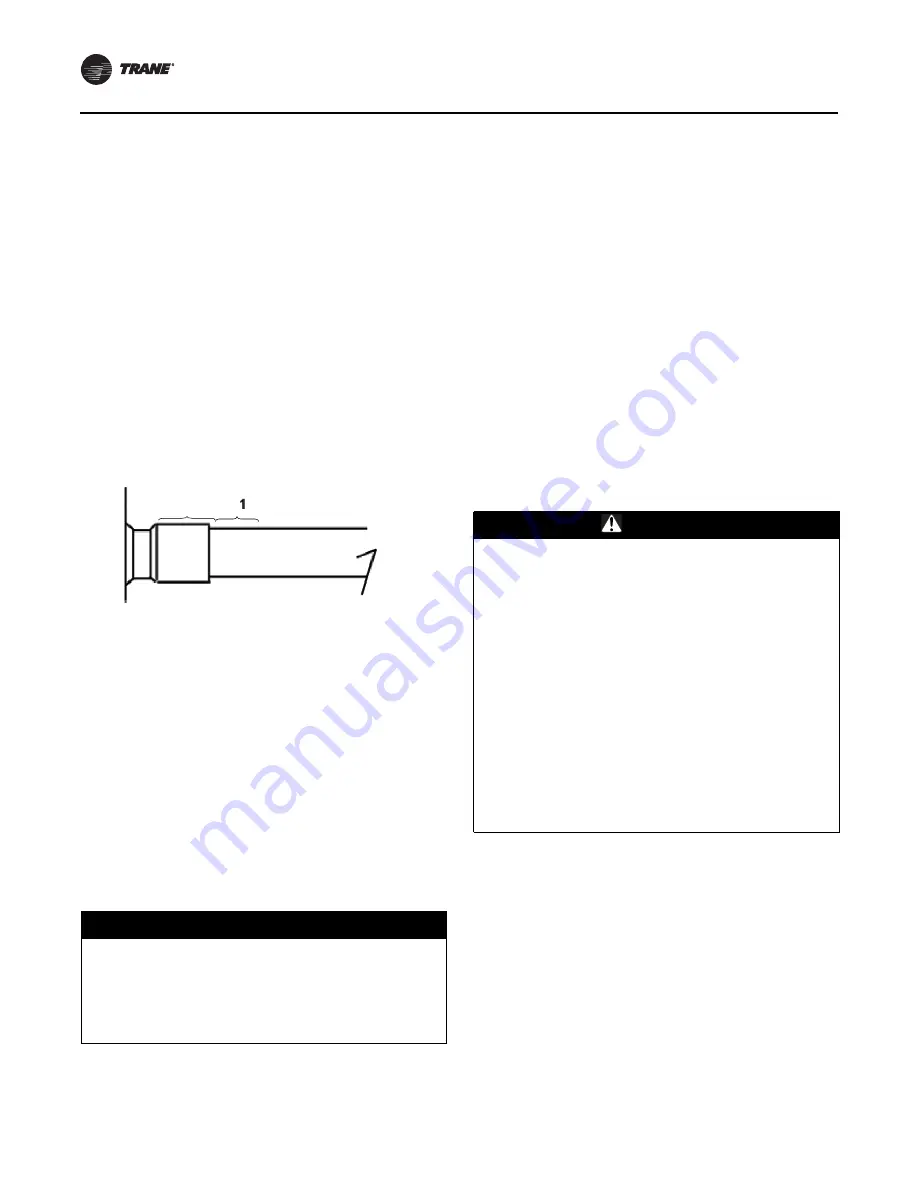
Removal and Installation
16
COM-SVN01D-EN
ii. Use 40% silver brazing alloy with flux.
iii. Start heating the tube first. Evenly heat the tube,
location 1 (see
), until it reaches a dull
red color. When using flux, this color is also a
good indicator of when the proper brazing
temperature has been reached. Continue
heating the tube until the flux passes the
“bubbling” temperature range and becomes
quiet, completely fluid, and transparent—it
should have the appearance of clear water.
iv. Direct the flame from the tube to the fitting,
evenly heating it until the flux that may be
remaining in the fitting is also completely fluid.
v. Sweep the torch between the fitting and the
tube, locations 1 and 2 (see
), with most
of the heat being applied to the heavier and
slower-heating fitting until the tube and fitting
reach and maintain a uniform heat in both parts.
Figure 10. Brazing locations 1 and 2
vi. Pull the flame slightly back and feed the brazing
material in between the fitting and the tube. If the
joint has been properly heated, the braze
material should flow around and into the joint.
Important:
The heated base metal should melt the
filler; the heat from the torch flame should
not be what melts the filler.
vii.Once the braze material has flowed around and
into the joint, briefly move the torch around the
fitting to ensure complete capillary action into
the joint.
viii.Check the joint to visually ensure that the braze
material is completely around the joint.
e. Post-Braze
NOTICE
NOTICE
Clean Flux From Joint!
Quench the joint with water or a wet rag while the joint
is still hot—but below 900°F—to shock off the flux. If
not cleaned off, flux could hide leaks. Flux is also
corrosive and could lead to long-term problems and
equipment damage if not properly removed.
•
Tandem (two compressors) and trio combinations
(three compressors) with uneven compressor
combinations requires the use of restrictor(s) to
balance the oil level in the compressor. Refer to
COM-SVN02*-EN,
Installation: Restrictor
(or the most
recent version) for proper size and location of the
restrictor.
•
When brazing refrigerant connections, protect
compressor body and terminal box from torch heat
damage.
•
When brazing, always use a nitrogen purge to prevent
the formation of copper oxide contamination that can
damage the compressor.
•
CSHN/CSHL compressors have an internal check valve.
When pressurizing the system, it is important to never
allow the low-side pressure to exceed the high-side
pressure by more than 5 bar (72 psig). Such a pressure
differential could result in pressure compressor
damage. Also, slowly raise the pressure over a
two-minute time period to allow sufficient time for the
internal pressures in the compressor to equalize.
Electrical Connections
WARNING
Hazardous Service Procedures!
Failure to follow all precautions in this manual and on
the tags, stickers, and labels could result in death or
serious injury.
Technicians, in order to protect themselves from
potential electrical, mechanical, and chemical hazards,
MUST follow precautions in this manual and on the
tags, stickers, and labels, as well as the following
instructions: Unless specified otherwise, disconnect all
electrical power including remote disconnect and
discharge all energy storing devices such as capacitors
before servicing. Follow proper lockout/tagout
procedures to ensure the power can not be
inadvertently energized.When necessary to work with
live electrical components, have a qualified licensed
electrician or other individual who has been trained in
handling live electrical components perform these
tasks.
2
















